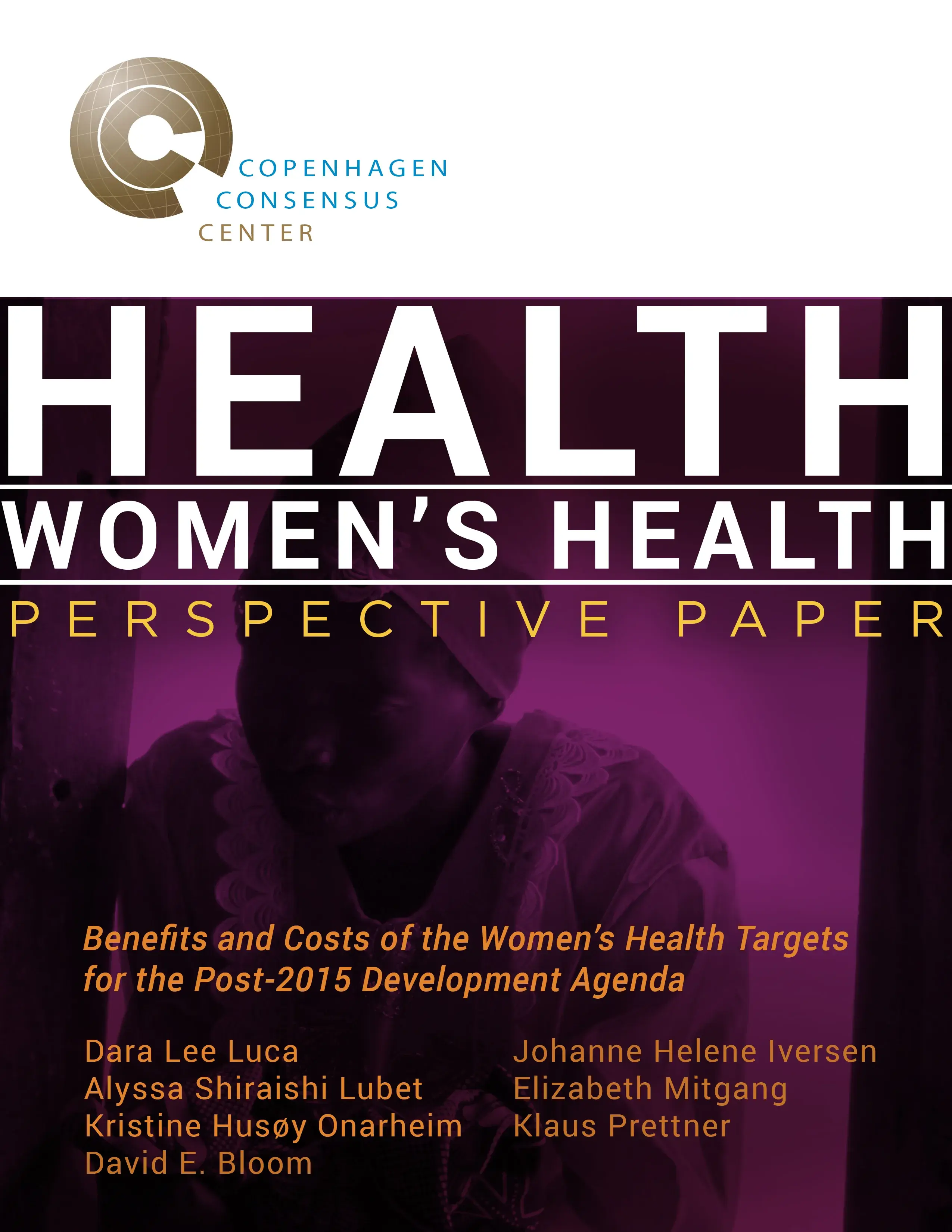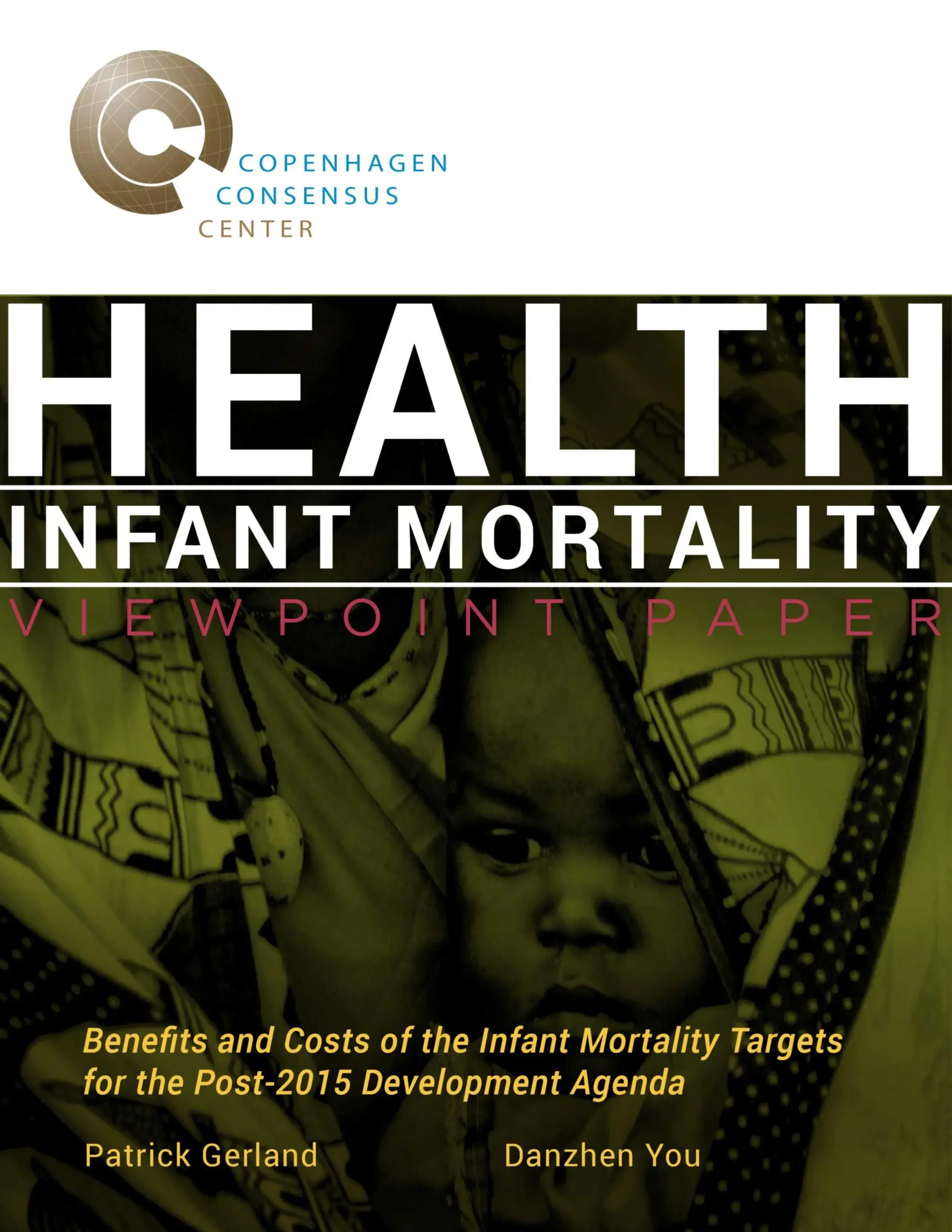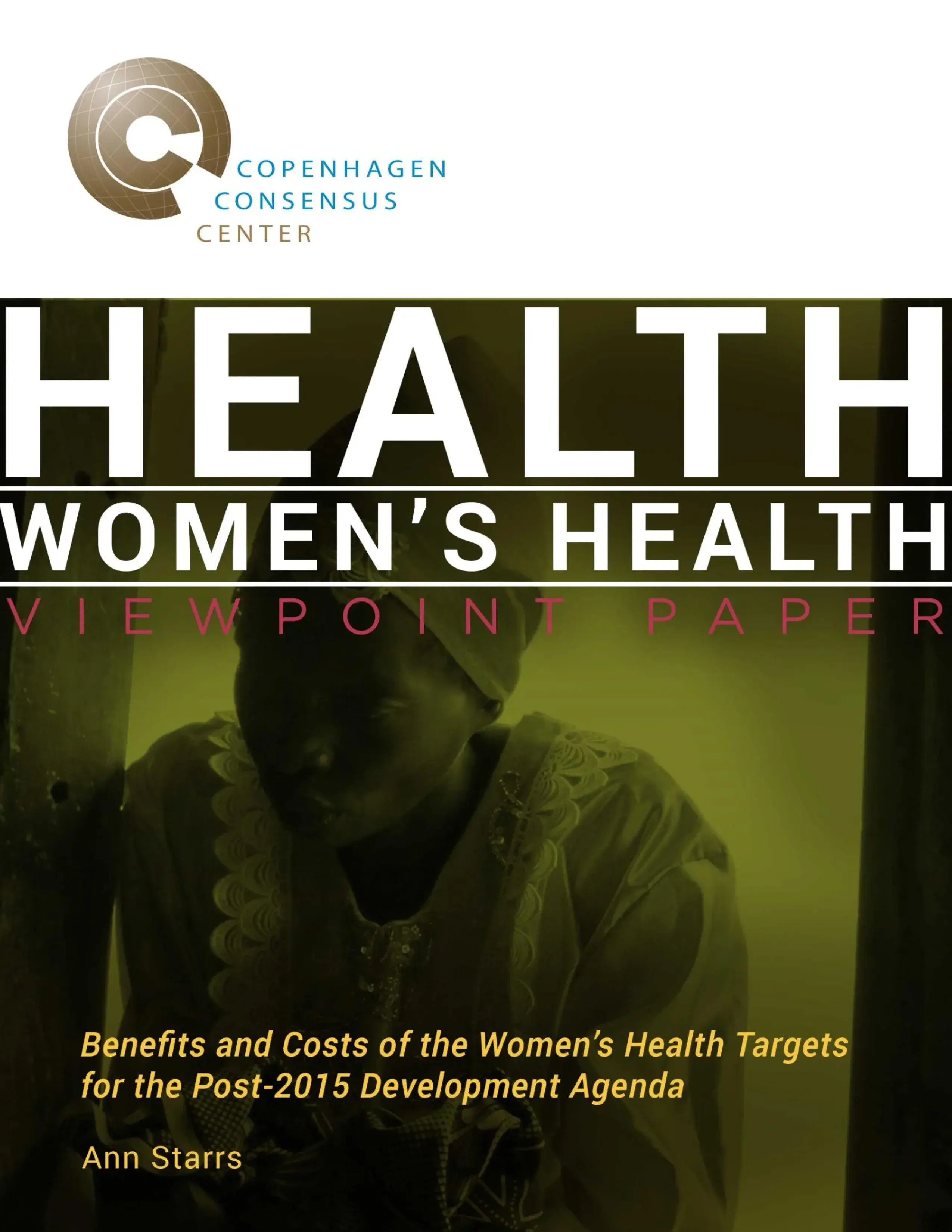Health - Women & Children
How can we improve women’s health and save more than 14m children from dying before 2030? New research points to three development targets underpinned by cost effective strategies that can achieve this amazing ambition.
Providing universal access to sexual and reproductive health services and eliminating the unmet need for contraception will result in 640,000 fewer newborn deaths, 150,000 fewer maternal deaths and 600,000 fewer children who lose their mother. At the same time, societies will enjoy a demographic dividend, with few dependents and many in the work force, driving faster economic growth. The costs will be about $3.6 billion/year, but the benefits will be more than $400B annually. In total, each dollar spent will do $120 of benefits.
Second, aiming to reduce newborn mortality by 70% will prevent 2m child deaths per year. This will involve providing expecting mothers with nutrients and protection from disease, having nurses and clean facilities at birth, and then ensuring best practice child care techniques immediately after, such as ‘kangaroo care’. Overall the benefits are $9 for every dollar spent, though the costs are very large at $14billion per year.
Finally, diminishing the lifetime risk of cervical cancer by 40% in developing countries, by providing human papillomavirus vaccination (HPV) to young girls, will lead to 270,000 fewer deaths for every cohort vaccinated. Recent agreements to provide the HPV vaccination at very reduced prices in developing countries makes this outcome more achievable and cost effective, at $400m per year and returning $3 for every dollar spent.
Summary Of The Targets From The Papers
| Target | Annual Costs ($b) | Annual Benefits ($b) | Benefit for Every Dollar spent |
|---|---|---|---|
| Universal access to sexual and reproductive health (SRH) services by 2030 | $3.6 | $433 | $120 |
| Reduce neo-natal (0-27 days) mortality by 70% (2013-2030) | $14 | $132 | $9 |
| Diminish the lifetime risk of cervical cancer by 40% (representing nearly 3m avoided deaths) | $0.4 | $1.4 | $3 |
Scroll down to read our set of reports examining women’s and children’s health targets for the post-2015 development agenda, written by leading economists and experts.
Women's Health Perspective
In this paper, Dara Lee Luca and David E. Bloom of the Harvard School of Public Health along with scholars from the University of Bergen and Vienna University of Technology examine the economic evidence behind interventions to improve women’s health. Noting that previous Copenhagen Consensus analysis already estimates the value of sexual and reproductive health rights, the authors decide to focus on another crucial women’s health issue: reducing deaths and disability from cervical cancer. Recent agreements to lower the cost of the human papillomavirus (HPV) vaccination in developing countries, enables large scale (70% coverage) vaccine rollout which the authors show returns $3 for every dollar spent.
…scaling up HPV vaccination – in conjunction with judicious screening guidelines – could be the key to reducing the burden of cervical cancer in developing countries.”
- Dara Lee Luca et al.

Infant Mortality Perspective
Günther Fink, Associate Professor of International Health Economics at Harvard School of Public Health examines the costs and benefits of interventions to prevent the death of neo-natals, children less than 28 days old. He suggests that reducing neo-natal deaths by 70% or 2 million children, by 2030 is an effective target, returning $9 for every dollar spent through strategies such as nourishing pregnant mothers and providing clean birthing facilities. However, Fink cautions that these strategies would require significant upgrading of health systems around $14B per year in additional costs - a challenge given the current landscape of global health financing.
…large further reductions in neonatal as well as child mortality are possible and should be targeted by the new development goals. Compared to other areas like diarrhea, malaria or HIV, achieving improvements in neonatal mortality will require more fundamental changes in health systems, and, accordingly, require substantially more resources.”
- Günther Fink

Infant Mortality Viewpoint
Patrick Gerland, Senior Analyst, Department of Economic and Social Affairs, United Nations and Danzhen You, Statistics and Monitoring Specialist at UNICEF, acknowledge recent progress in reducing under-five mortality, but point out that 17,000 under-five year old children still die every day from preventable causes. They focus attention on the need for coordinated action by public, private and civil society sectors in a range of areas, including nutrition, water and sanitation, education and other sectors, all of which impact on health outcomes for both women and children.
Countries need to turn their pledges into practical action to scale up progress on newborn and child survival by sharpening national strategies for reproductive, maternal, newborn and child health, setting costed targets and monitoring progress."
- Patrick Gerland and Danzhen You

Women's Health Viewpoint
Ann Starrs, President, Guttmacher Institute argues that the global community must recognizes the importance of universal access to sexual and reproductive health to all aspects of development goals from girls education to reducing poverty to enhancing sustainable economic growth.
Addressing that unmet need (for contraceptives) is one of the most fundamental – and potentially far-reaching – challenges we face in public health. Helping women and families avoid an unwanted pregnancy saves lives and money.”
– Ann Starrs

The Post-2015 Consensus project brings together 60 teams of economists with NGOs, international agencies and businesses to identify the targets with the greatest benefit-to-cost ratio for the UN's post-2015 development goals.




